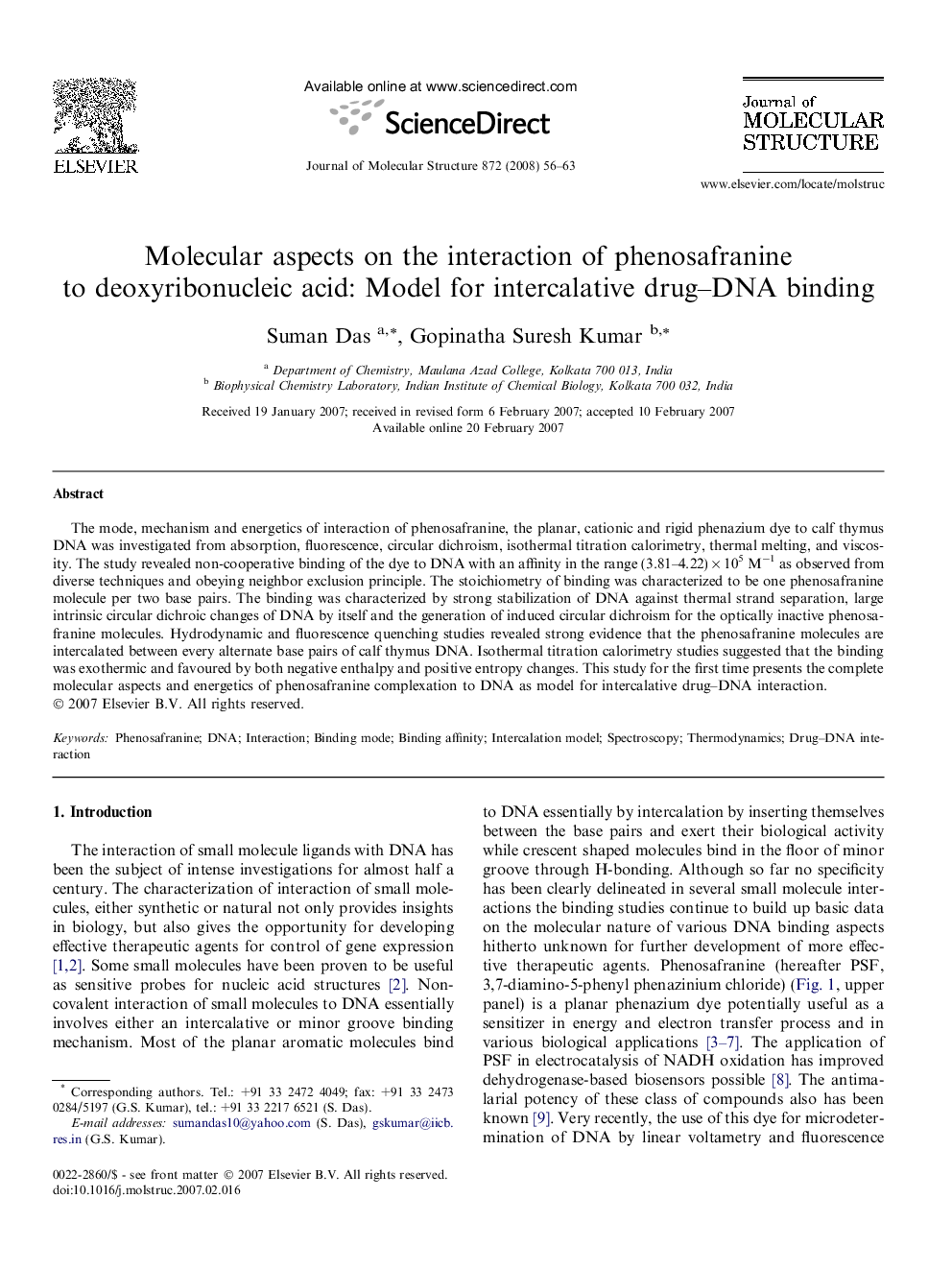| Article ID | Journal | Published Year | Pages | File Type |
|---|---|---|---|---|
| 1404326 | Journal of Molecular Structure | 2008 | 8 Pages |
The mode, mechanism and energetics of interaction of phenosafranine, the planar, cationic and rigid phenazium dye to calf thymus DNA was investigated from absorption, fluorescence, circular dichroism, isothermal titration calorimetry, thermal melting, and viscosity. The study revealed non-cooperative binding of the dye to DNA with an affinity in the range (3.81–4.22) × 105 M−1 as observed from diverse techniques and obeying neighbor exclusion principle. The stoichiometry of binding was characterized to be one phenosafranine molecule per two base pairs. The binding was characterized by strong stabilization of DNA against thermal strand separation, large intrinsic circular dichroic changes of DNA by itself and the generation of induced circular dichroism for the optically inactive phenosafranine molecules. Hydrodynamic and fluorescence quenching studies revealed strong evidence that the phenosafranine molecules are intercalated between every alternate base pairs of calf thymus DNA. Isothermal titration calorimetry studies suggested that the binding was exothermic and favoured by both negative enthalpy and positive entropy changes. This study for the first time presents the complete molecular aspects and energetics of phenosafranine complexation to DNA as model for intercalative drug–DNA interaction.
